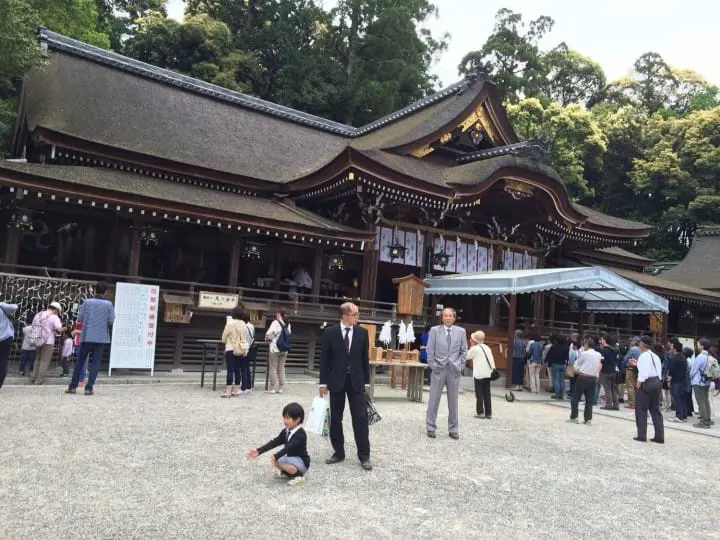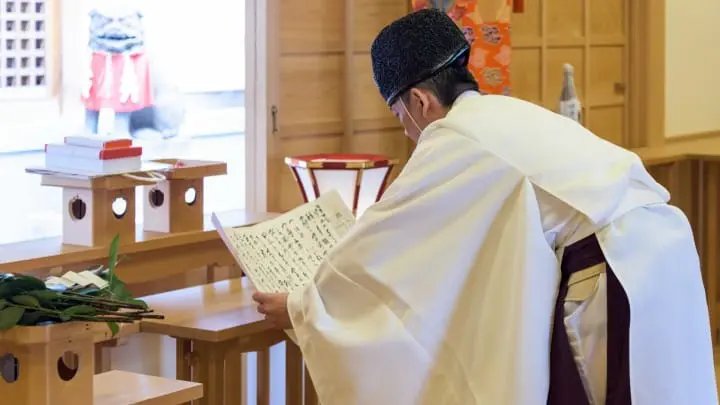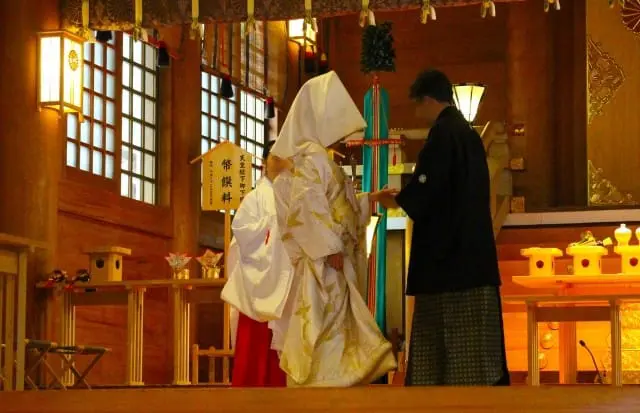Shinto - Japanese Encyclopedia

Shinto is the indigenous religion of Japan, and has existed in the lives of the Japanese since the earliest ages of the nation. Shrines dedicated to the various deities are located in all parts of the country and make popular sightseeing destinations.
What is Shinto?

Shinto is the indigenous religion of Japan. From ancient times to the modern day, it has existed as an ethnic religion in Japan and still permeates the various aspects of everyday life of the Japanese.
There are Shinto shrines where various deities are enshrined located throughout the country, all of which see numerous visitors annually. In today's article, we will discuss how to better enjoy visiting a shrine, and provide an introduction to the basics of Shinto.
The Origins of Shinto

The Shinto faith is believed to have been born nearly 200 years before the Christian era, although a precise date has yet to be found.
The majority of the deities that figure in Shinto come from nature, the sun and mountains being two common ones. With earthquakes, typhoons and other natural disasters happening so frequently in Japan, it's not hard to see that the natural world would have an incredible influence on the daily lives of the people. It is from that respect and fear of nature that the piety of Shinto towards nature came about.
From that, these Shinto deities came to be worshiped at shrines. Because of this above-mentioned piety, many of the larger, more popular (and older) shrines tend to be situated very close to large mountains, rivers, rocks, waterfalls and other natural sites. So the next time you pay a visit to a shrine, please take a look around and see what the natural landscape around is like.
Many different deities and Shinto itself took form in all areas of the Japanese islands; before long it was necessary for the country and for Shinto to consolidate and organize itself. Then, in the 6th century, Buddhism was brought to Japan and to differentiate Japan's indigenous faith from Buddhism, the term Shinto, meaning 'Way of the Gods', was created.
Shinto Worldview and Shinto Deities

One of the biggest differences between Shinto and religions like Christianity and Islam is that there are no holy books like the Bible or Qur'an in Shinto. When compared to other religions, the structure and worldview of Shinto are extremely different.
In the realm of Shinto, there is not a single, central God. There is an expression 'yaoyorozu' in Japanese, which means 'the eight million gods' or 'myriad gods', which expresses just how many deities there are in Shinto.
And if you are to read Japanese myths, you will soon notice that these deities are not all that different from humans. Shinto gods drink alcohol like humans, and sometimes even fall in love with them too.
As already mentioned, natural things such as the sun and mountains are considered to be gods by Shinto, however things need not be natural in order to be gods. There are gods of the kitchen and even the toilet; it is said that if something is close to people it can be considered a god of some form.
There are also some humans that have become deified as well. The UNESCO World Heritage Site, Nikko Tosho-gu Shrine is where Tokugawa Ieyasu, the samurai that unified Japan together into a 200 year long peace, is enshrined as a god.
To learn more about Nikko Tosho-gu Shrine, please take a look at: Highlights Of Nikko Tōshō-gū Shrine, A UNESCO Site.
When you are going to pay a visit to a shrine, you should find out which god is enshrined there and what sorts of powers they are said to possess too.
The People Who Work at Shrines

The people who work at a shrine are referred to as shinshoku or Shinto priests.
Although it may differ based on the scale and history of the shrine, there are generally three shinshoku at a given shrine: guji (a chief priest), negi (a senior priest), and gonnegi (general priest). As a general rule, there is at least one chief priest and senior priest responsible for each god at any shrine.
The Relationship Between the Japanese and Shinto

According to the data collected by the Japanese Agency for Cultural Affairs and recorded in their Religious Annual, 100.6 million Japanese people, nearly the entire country, count themselves as being a supporter/worshiper of the Shinto faith. Although, just what they mean by stating that they believe in Shinto is somewhat unclear.
Nevertheless, when deciding dates for important family ceremonies they may refer to a Shinto-based calendar, and when it is the New Year, nearly all Japanese people head to a shrine in order to pray for good fortune in the coming year. If they have a test or exam coming up, they will offer up prayers for success in their schooling, make wishes and pray for luck when looking for love or when getting married, pray for help with fertility and safe delivery during childbirth, and later pray for the healthy growth and development of their children at various shrines. Whether they are consciously aware of being religious or not by worshiping at a shrine, Shinto is undoubtedly a faith that is intimately connected with the daily lives of the Japanese.
When you visit Japan, please make a point to stop by and take in the sights of a Shinto shrine for yourself.
To learn more about how to pray at a temple versus a shrine, take a look atHow to Properly Pray at a Temple, or to learn more about the differences between Shinto and Japanese Buddhism, read Temple or Shrine, What's the Difference?
日本への訪日外国人の方が、もっと増えますように!



































![[Coupon Available] Attention Overseas Winter Sports Fans! Nagano's Sports Depot Has Evolved](https://resources.matcha-jp.com/resize/720x2000/2026/01/05-254819.webp)
![[2 hours from Tokyo ] 10 Quiet and Breathtaking Views of Mount Fuji in Yamanashi Hokuto City , Yamanashi - Part 2](https://resources.matcha-jp.com/resize/720x2000/2025/12/16-253037.webp)

![[Reopening in March 2026] Ikoma Sanjo Amusement Park Park, 45 minutes from Osaka , with free admission](https://resources.matcha-jp.com/resize/720x2000/2024/08/28-194409.webp)